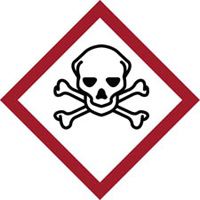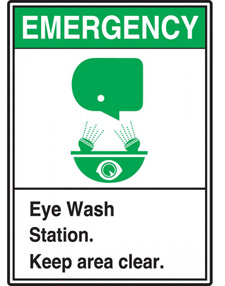| The Home page of ILPI's Safety Data Sheet (SDS) Resource, the leader in SDS information since 1995! | |
| The history and philosophy behind this resource. | |
| A curated collection of books and reference materials concerning Safety Data Sheets and closely related topics. | |
| Paste your plain text SDS into the SDS-Demystifier, and it will be converted into a hypertext-enriched document with links to detailed explanations of each key term. | |
| An extensive list of frequently asked questions about Safety Data Sheets including regulations, content, compliance, and more. | |
| A humorous take on Safety Data Sheet jargon. Fill in the blanks on our entry form to generate a personalized Unsafety Data Sheet to share with your coworkers. | |
| Since 1995, we've maintained this massive curated list of the best places to find Safety Data Sheets on the Internet. | |
| You are here! Way more than a glossary, this hypertext-enhanced resource covers hundreds of SDS-related terms and expert knowledge. Each entry includes both the SDS relevance and links to additional authoritative resources. | |
| Archived results of Safety Data Sheet related polls taken by some of our millions of site visitors | |
| The OSHA regulations behind SDS regulations, including the inspection guidelines and over 400 official interpretations letters under the Hazard Communication Standard | |
| Commercial suppliers of SDS authoring and management software as well as cloud compliance services. | |
| Commercial companies that will create SDS's for your specific needs as well as SDS translation companies. |

Safety signs, banners, and scoreboards? Get yours at Safety Emporium!
Definition

Get your GHS-compliant labels and signs from Safety Emporium.
A nitrile is an organic chemical that contains a cyano functional group (subunit), CN-, in which the carbon and nitrogen atoms have a triple bond i.e. C≡N-. The general chemical formula of a nitrile is RCN, where R is the organic group.
Nitriles can be thought of as organic cyanides, although they are ordinarily much less toxic than simple cyanide salts such as sodium or potassium cyanide (NaCN or KCN).
Additional Info
Under the standard chemical naming convention used by chemists (IUPAC nomenclature), nitriles are named according to these rules:
- Compounds in which the carbon atom of the CN group is attached to an acyclic hydrocarbon fragment are generally named using the suffix nitrile.
- Nitriles in which the -CN group can be thought of as having replaced the -COOH group of a corresponding trivially named carboxylic acid are named by removing "ic acid" or "oic acid" and replacing it with onitrile.
- A nitrile that is an analog of a compound that has "carboxylic acid" as its suffix, is named by substituting the suffix carbonitrile
In addition, the use of cyanide as a suffix is still common, and one nitrile may be known by a variety of different names. Some examples of these are shown below, with the most rigorous IUPAC name for each shown in red:

When there are other functional groups that take naming precedence over the cyanide/nitrile group, the prefix cyano is used. In this example, we have color-coded the parts of the name and the parts of the molecule that correspond to each other:

Nitriles are usually less toxic than cyanide salts, although they may contain some of the latter as impurities. Aliphatic nitriles can be metabolized to the free cyanide ion, making them generally more toxic than arylnitriles which are stable in the body.

When you work with chemicals, eye washes, safety showers and equipment signs are a must. Get yours at Safety Emporium.
The cyanide unit occurs in other compounds such as cyanamide (carbodiimide, H2NC≡N), cyanoacetic acid (malonic mononitrile, N≡CH2COOH), potassium ferricyanide (K3[Fe(CN)6]) and potassium ferrocyanide (K4[Fe(CN)6]), however these compounds do not release cyanide and are therefore much less toxic than simple cyanide salts or many nitriles.
Nitriles have tremendous industrial importance. For example, through a process called hydrocyanation, HCN reacts with 1,4-butadiene (an alkene) to form adiponitrile (also referred to as 1,4-dicyanobutane, hexanedinitrile, tetramethylene cyanide, or the formula NC(CH2)4CN), a chemical precursor to hexamethylene diamine (also known by 1,6-diaminohexane or the formula H2N(CH2)6NH2), one of the polymers used to make nylon. The wide range of chemical reactivity for nitriles is what makes them so useful, but this same feature means that they are incompatible with many substances (see SDS relevance below).
Nitriles are also important laboratory and industrial solvents because of their unusual physical properties. For example, nitriles boil much higher than the corresponding hydrocarbon of similar molecular weight; acetonitrile (CH3CN, FW 41 amu) boils at 81 °C whereas propane (CH3CH2CH3, FW 44 amu) boils at -42 °C. This increase can be ascribed to the polar nature (uneven distribution of electron density) of nitriles; the C≡N bond is polarized and intermolecular alignment of these dipoles increases the intermolecular attraction between the solvent molecules. In the drawing below, the lone pair of electrons on the nitrogen atom (present in all nitriles, but normally omitted from simple drawings) is explicitly shown to help the reader understand the polarity of the molecule:

This polarity makes nitriles terrific aprotic (no easily ionized hydrogen atom) solvents. For example, acetonitrile is completely miscible with water and methanol as well as organic solvents such as diethyl ether, ethyl acetate, and acetone; at the same time it is virtually insoluble in saturated hydrocarbons. This versatility makes it trivially easily to remove acetonitrile from reaction mixtures without resorting to distillation. Its high dielectric constant (38) and dipole moment (3.9 Debye) make acetonitrile ideal for promoting chemical reactions where ionization is involved, as a solvent for inorganic salts (electrolytes), and as a medium for electrochemical studies.
SDS Relevance

Your employees can stay informed and comply with OSHA regulations with SDS information stations and compliance products from Safety Emporium.
Nitriles usually appear on Safety Data Sheets in the context of incompatible materials in Section 10 (stability and reactivity) of the SDS. In general, nitriles are incompatible with acids, bases, amines, oxiranes, and acid anhydrides.
Nitriles can produce other nitriles and highly toxic HCN gas as well as carbon monoxide when burned. You may therefore also see nitriles mentioned as a toxic byproduct of combustion under Section 5 (fire-fighting measures) or Section 10 (stability and reactivity) of the SDS.
Although not highly toxic like inorganic cyanides or hydrogen cyanide, nitriles are generally toxic materials and should be used with proper engineering controls and personal protective equipment as recommended in Section 8 (exposure controls/personal protection) of the SDS. As with any hazardous substance, minimize your exposure or potential exposure.
Nitrile may also appear on an SDS as a recommended type of glove, boot, apron or other piece of personal protective equipment. Polymerization of acrylonitrile gives nitrile rubber, a substance with excellent resistance to oils and greases. Nitrile gloves are low cost, have good physical properties, and offer good dexterity. However, they are a poor choice for working with benzene, methylene chloride, trichloroethylene, and many ketones. In this context, the compatibility of the substance with respect to nitrile gaskets, seals or o-rings may also be mentioned.
Further Reading
- IUPAC nomenclature (naming) rules for nitriles, isocyanides and related compounds courtesy of ACD Labs.
- The Agency for Toxic Substances and Disease Registry has a ToxFAQ for acrylonitrile (also available in Spanish)
- SDS of acetonitrile at Fisher Scientific.
- Understanding Chemistry: Nitriles dicusses nitriles, as well as their preparation, hydrolysis and reduction at Chemguide.
- Glove Selection and Usage at the University of California, San Diego. Includes info about latex allergies and more.
- Chemical Application & Recommendation Guide for gloves at Ansell Healthcare, the world's largest manufacturer of protective gloves and clothing. Search or download.
- Study Organic Chemistry explains how to study and understand organic chemistry.
See also: amine, carboxylic acid, cyanide, cyanosis, volatility.